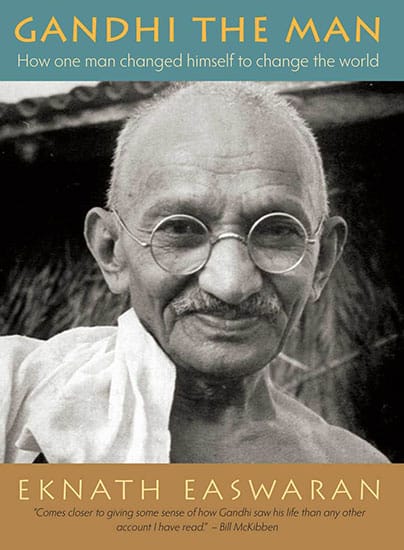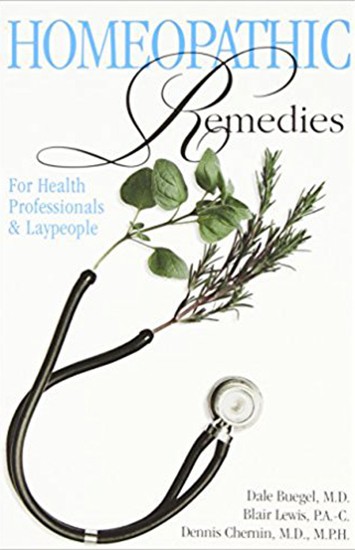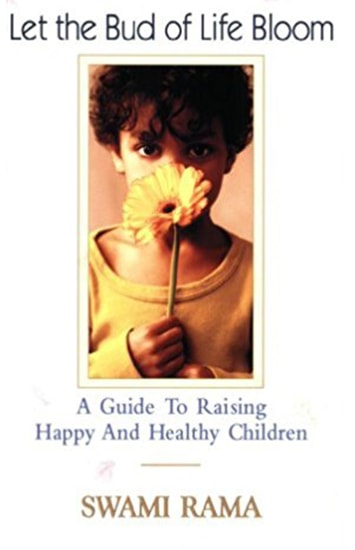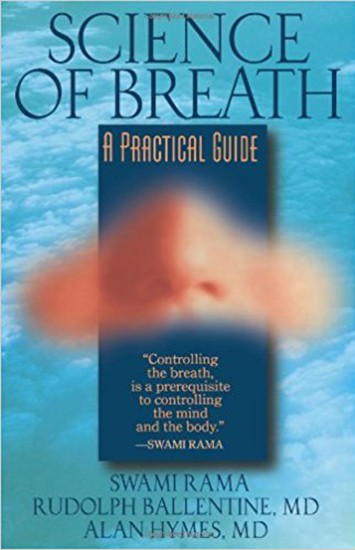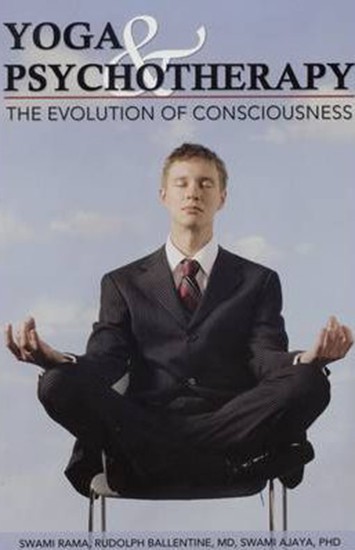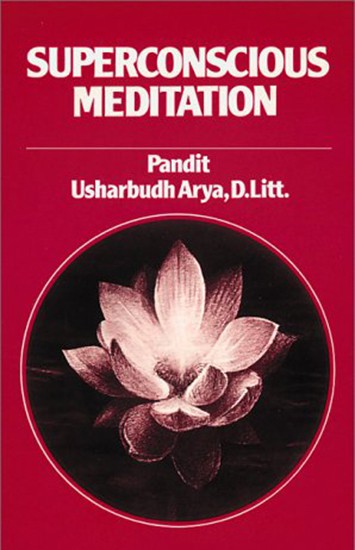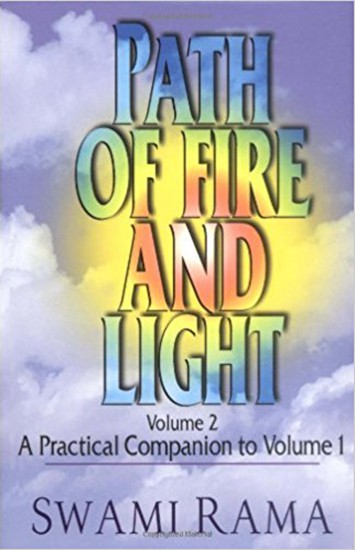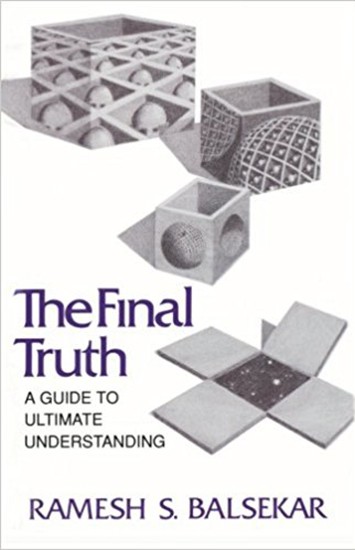-
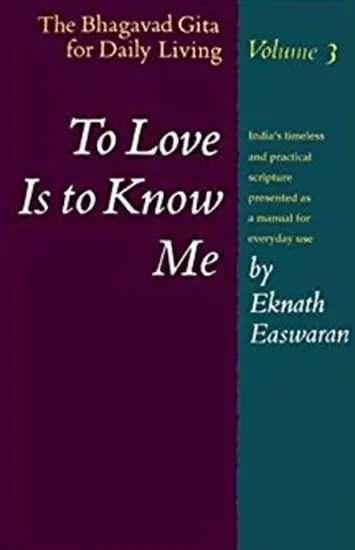 To understand death, a person must try to understand the purpose of life and the relationship between life and death. The two are partners, each providing a context for the other. Death is not a period, but merely a pause on a long journey. When life and death are accepted as having real meaning and purpose, and death is understood and accepted as part of the human journey, then the fear of death disappears and life can be lived fully. This book is about the relationship between life and death, and the 'how and why' of organizing one's life in a way that leads to expansion and growth, and that is helpful in preparing for the transition we call death.
To understand death, a person must try to understand the purpose of life and the relationship between life and death. The two are partners, each providing a context for the other. Death is not a period, but merely a pause on a long journey. When life and death are accepted as having real meaning and purpose, and death is understood and accepted as part of the human journey, then the fear of death disappears and life can be lived fully. This book is about the relationship between life and death, and the 'how and why' of organizing one's life in a way that leads to expansion and growth, and that is helpful in preparing for the transition we call death. -
 Eknath Easwaran is a foremost translator and interpreter of the much-loved Indian scripture, the Bhagavad Gita. In this verse-by-verse commentary on the Gita, Easwaran translates each verse, relates it to our modern lives through stories and anecdotes, and gives us spiritual exercises that we can use every day. This second volume in a three-volume set covers chapters 7 – 12 of the Gita, and builds a bridge between scientific knowledge and spiritual wisdom by showing the indivisible unity governing all creation.
Eknath Easwaran is a foremost translator and interpreter of the much-loved Indian scripture, the Bhagavad Gita. In this verse-by-verse commentary on the Gita, Easwaran translates each verse, relates it to our modern lives through stories and anecdotes, and gives us spiritual exercises that we can use every day. This second volume in a three-volume set covers chapters 7 – 12 of the Gita, and builds a bridge between scientific knowledge and spiritual wisdom by showing the indivisible unity governing all creation. -
 Eknath Easwaran is a foremost translator and interpreter of the much-loved Indian scripture, the Bhagavad Gita. He liked to say that his verse-by-verse commentary grew like a tree issuing directly from his life, which was so rooted in the Gita that he found a deep understanding of its teachings in the most everyday experiences – sharing a treat with young children, walking with friends down a busy street, or watching a mime in San Francisco’s Union Square. Easwaran translates each verse, relates it to our modern lives through stories and anecdotes, and gives us spiritual exercises that we can use every day. This first volume in a three-volume set covers chapters 1–6 of the Gita, and concentrates on the individual: the nature of our innermost Self, how it can be discovered in the depths of consciousness, and how this discovery transforms daily life. The introduction includes instructions in Easwaran’s universal method of passage meditation.
Eknath Easwaran is a foremost translator and interpreter of the much-loved Indian scripture, the Bhagavad Gita. He liked to say that his verse-by-verse commentary grew like a tree issuing directly from his life, which was so rooted in the Gita that he found a deep understanding of its teachings in the most everyday experiences – sharing a treat with young children, walking with friends down a busy street, or watching a mime in San Francisco’s Union Square. Easwaran translates each verse, relates it to our modern lives through stories and anecdotes, and gives us spiritual exercises that we can use every day. This first volume in a three-volume set covers chapters 1–6 of the Gita, and concentrates on the individual: the nature of our innermost Self, how it can be discovered in the depths of consciousness, and how this discovery transforms daily life. The introduction includes instructions in Easwaran’s universal method of passage meditation. -
 The Heart and Science of Yoga™ is both the record of a personal journey and a transformational teaching. You'll find easy-to-learn meditations, prayers, teaching stories from the world's great spiritual traditions, breathing practices, a user's guide for the mind, techniques for accessing intuitive wisdom, an introduction to ancient Ayurvedic health principles and a holistic program of easy, gentle exercise. Whether you are a beginner or a long-time student, Leonard provides loving support and valuable insights to advance your understanding, deepen your practice and nurture your Self-transformation. The Heart and Science of Yoga™ is the perfect companion and guide on the greatest adventure you will ever have -- your personal journey to peace, happiness and freedom from fear.
The Heart and Science of Yoga™ is both the record of a personal journey and a transformational teaching. You'll find easy-to-learn meditations, prayers, teaching stories from the world's great spiritual traditions, breathing practices, a user's guide for the mind, techniques for accessing intuitive wisdom, an introduction to ancient Ayurvedic health principles and a holistic program of easy, gentle exercise. Whether you are a beginner or a long-time student, Leonard provides loving support and valuable insights to advance your understanding, deepen your practice and nurture your Self-transformation. The Heart and Science of Yoga™ is the perfect companion and guide on the greatest adventure you will ever have -- your personal journey to peace, happiness and freedom from fear. -
 Phil Nuernberger's From Loneliness to Love picks up where his prior book "The Quest For Personal Power" ends. The author briefly restates his methods for achieving self-knowledge, self-mastery and self-fulfillment which the reader will find clearly explained in "The Quest." Phil's message is that loneliness is a spiritual problem, an illusion created by our ego. He prescribes prayer, meditation, and contemplation as the means to achieving the mystical experience of love.
Phil Nuernberger's From Loneliness to Love picks up where his prior book "The Quest For Personal Power" ends. The author briefly restates his methods for achieving self-knowledge, self-mastery and self-fulfillment which the reader will find clearly explained in "The Quest." Phil's message is that loneliness is a spiritual problem, an illusion created by our ego. He prescribes prayer, meditation, and contemplation as the means to achieving the mystical experience of love. -
 One cannot talk about God, Dr. Arya tells us; one can only be conscious of Him experientially. Everyone is looking for God: the alcoholic in his bottle, the child in his Superman comics, the artist in his work. The need to know God springs from our deepest nature. But most of us are not aware of this. And so, drawing upon his own rich background in the yoga-Vedanta tradition, the author tells us how this awareness can be developed in everyone (including atheists and agnostics).
One cannot talk about God, Dr. Arya tells us; one can only be conscious of Him experientially. Everyone is looking for God: the alcoholic in his bottle, the child in his Superman comics, the artist in his work. The need to know God springs from our deepest nature. But most of us are not aware of this. And so, drawing upon his own rich background in the yoga-Vedanta tradition, the author tells us how this awareness can be developed in everyone (including atheists and agnostics). -
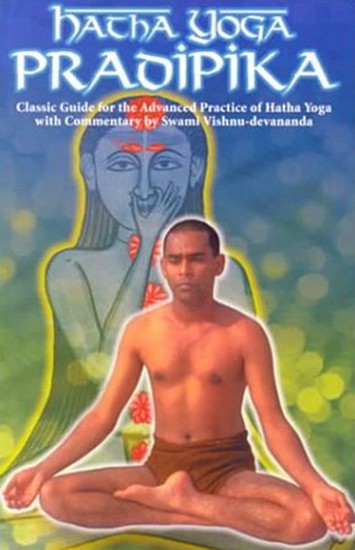 The Hatha Yoga Pradipika is a classical text describing Hatha Yoga. It is said to be the oldest surviving text on Hatha Yoga. Swami Swatmarama, a disciple of Swami Goraknath, wrote the text in the 15th century CE, drawing upon previous texts and his own experiences. While the text describes asanas (postures), purifying practices (shatkarma), mudras (finger and hand positions), bandhas (locks), and pranayama (breath exercises), it also explains that the purpose of Hatha Yoga is the awakening of kundalini (subtle energy), advancement to Raja Yoga, and the experience of deep meditative absorption known as samadhi.
The Hatha Yoga Pradipika is a classical text describing Hatha Yoga. It is said to be the oldest surviving text on Hatha Yoga. Swami Swatmarama, a disciple of Swami Goraknath, wrote the text in the 15th century CE, drawing upon previous texts and his own experiences. While the text describes asanas (postures), purifying practices (shatkarma), mudras (finger and hand positions), bandhas (locks), and pranayama (breath exercises), it also explains that the purpose of Hatha Yoga is the awakening of kundalini (subtle energy), advancement to Raja Yoga, and the experience of deep meditative absorption known as samadhi. -
 The Yoga Aphorisms of Patanjali is a major work on the practice of yoga and meditation. Through these ancient aphorisms you will learn how to control your mind and achieve inner peace and freedom. Although these methods were taught over 2,000 years ago, they are as alive and effective today as they have ever been.
The Yoga Aphorisms of Patanjali is a major work on the practice of yoga and meditation. Through these ancient aphorisms you will learn how to control your mind and achieve inner peace and freedom. Although these methods were taught over 2,000 years ago, they are as alive and effective today as they have ever been. -
 How to Live Between Office Visits will show you helpful insights for reaching healing and happiness. The book includes great stories that can help you through life’s hard challenges and struggles and come out lighter, brighter, and happier. It is full of witty and helpful assertions and anecdotes from Bernie’s years of medical practice. If you need or want any help getting through office visits with hope, light and health; or you just want to have a better outlook for life, this is the book for you! It also makes a great gift for a loved one that could use a little help.
How to Live Between Office Visits will show you helpful insights for reaching healing and happiness. The book includes great stories that can help you through life’s hard challenges and struggles and come out lighter, brighter, and happier. It is full of witty and helpful assertions and anecdotes from Bernie’s years of medical practice. If you need or want any help getting through office visits with hope, light and health; or you just want to have a better outlook for life, this is the book for you! It also makes a great gift for a loved one that could use a little help. -
 This collection of the timeless teachings of one of the greatest sages of India, Sri Nisargadatta Maharaj, is a testament to the uniqueness of the seer's life and work and is regarded by many as a modern spiritual classic. I Am That (first published in 1973) continues to draw new audiences and to enlighten seekers anxious for self-realization. Sri Nisargadatta Maharaj was a teacher who did not propound any ideology or religion, but gently unwrapped the mystery of the self. His message was simple, direct, and sublime. I Am That preserves his dialogs with the followers who came from around the world seeking guidance in destroying false identities. The sage's sole concern was with the human suffering and the ending of suffering.
This collection of the timeless teachings of one of the greatest sages of India, Sri Nisargadatta Maharaj, is a testament to the uniqueness of the seer's life and work and is regarded by many as a modern spiritual classic. I Am That (first published in 1973) continues to draw new audiences and to enlighten seekers anxious for self-realization. Sri Nisargadatta Maharaj was a teacher who did not propound any ideology or religion, but gently unwrapped the mystery of the self. His message was simple, direct, and sublime. I Am That preserves his dialogs with the followers who came from around the world seeking guidance in destroying false identities. The sage's sole concern was with the human suffering and the ending of suffering. -
 Lectures on Yoga is a systematic, easy to understand presentation of effective self-training programs to expand one's physical, mental and spiritual horizons. East and West are united to give readers a practical method to self-understanding; all ages will benefit from this lucid presentation of time-honored wisdom.
Lectures on Yoga is a systematic, easy to understand presentation of effective self-training programs to expand one's physical, mental and spiritual horizons. East and West are united to give readers a practical method to self-understanding; all ages will benefit from this lucid presentation of time-honored wisdom. -
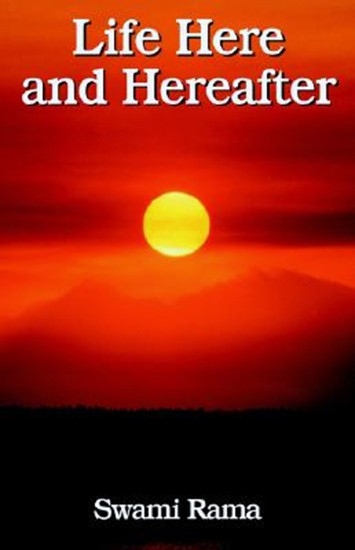 Based on the encounter between Yama, the King of Death, and Nachiketa, the seeker of death's meaning, this book examines the mystery and challenge of death. The story is taken from the Kathopanishad, one of the most important and ancient of all the scriptures. A philosophical understanding of the meaning and purpose of life and death is presented, along with a practical psychology for coping with life and for overcoming the fear of death.
Based on the encounter between Yama, the King of Death, and Nachiketa, the seeker of death's meaning, this book examines the mystery and challenge of death. The story is taken from the Kathopanishad, one of the most important and ancient of all the scriptures. A philosophical understanding of the meaning and purpose of life and death is presented, along with a practical psychology for coping with life and for overcoming the fear of death. -
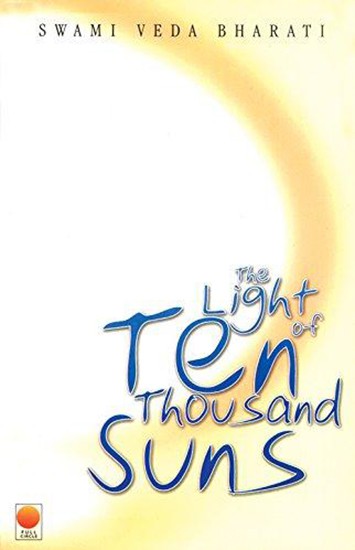 This special book is a set of inspirational teachings in poetic verse and prose of the major spiritual knowledge of the Himalayan yoga meditation tradition. "The Light of Ten Thousand Suns" is also the autobiography of Swami Veda Bharati, who allows us an intimate look into his own path of learning, teaching, and commitment to his Master.
This special book is a set of inspirational teachings in poetic verse and prose of the major spiritual knowledge of the Himalayan yoga meditation tradition. "The Light of Ten Thousand Suns" is also the autobiography of Swami Veda Bharati, who allows us an intimate look into his own path of learning, teaching, and commitment to his Master. -
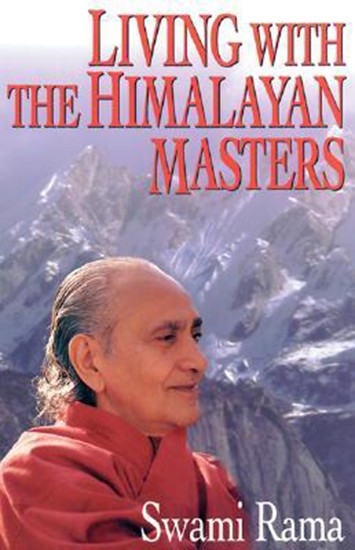 In this extraordinary account of his spiritual adventures, the author presents his encounters with Mahatma Gandhi, Sri Aurobindo, Rabindranath Tagore, a lady sage who never slept, and many other Himalayan masters. The author spent eleven months in a cave monastery and traveled to study in Tibet with his grandmaster. He author honors this spiritual teacher as a stream and a channel of wisdom. He modeled selflessness, fearlessness, faith, and determination as prerequisites for enlightenment. Swami Rama also writes about his experiences on the path of renunciation, which he calls "a razor's edge." He ponders the rich meanings of humility, conquering fear, trusting in divine protection, developing the powers of the mind, and casting off the body in death. One of the best examples of Swami Rama's humanity is conveyed in a brief chapter where he humorously tells of being mistaken as a ghost while meditating in a cemetery.
In this extraordinary account of his spiritual adventures, the author presents his encounters with Mahatma Gandhi, Sri Aurobindo, Rabindranath Tagore, a lady sage who never slept, and many other Himalayan masters. The author spent eleven months in a cave monastery and traveled to study in Tibet with his grandmaster. He author honors this spiritual teacher as a stream and a channel of wisdom. He modeled selflessness, fearlessness, faith, and determination as prerequisites for enlightenment. Swami Rama also writes about his experiences on the path of renunciation, which he calls "a razor's edge." He ponders the rich meanings of humility, conquering fear, trusting in divine protection, developing the powers of the mind, and casting off the body in death. One of the best examples of Swami Rama's humanity is conveyed in a brief chapter where he humorously tells of being mistaken as a ghost while meditating in a cemetery. -
 Rediscover the long-forgotten spiritual masters of Egypt and Europe. Johnsen, a leading author on Eastern spirituality, reveals how some of the most famous Greek thinkers – including Plato, Pythagoras, and Plutarch – understood the importance of harmony between mind and body, and practiced ancient yogic techniques, including meditation and vegetarianism. This book brings to light long-neglected historical accounts by the ancient Greeks themselves describing their pilgrimages to India and their encounters with enlightened masters of the East.
Rediscover the long-forgotten spiritual masters of Egypt and Europe. Johnsen, a leading author on Eastern spirituality, reveals how some of the most famous Greek thinkers – including Plato, Pythagoras, and Plutarch – understood the importance of harmony between mind and body, and practiced ancient yogic techniques, including meditation and vegetarianism. This book brings to light long-neglected historical accounts by the ancient Greeks themselves describing their pilgrimages to India and their encounters with enlightened masters of the East. -
 This inspiring book will be helpful to anyone who is seeking to understand the dynamic interplay between loving relationships and the path of spirituality. In clear, candid language, Swami Rama presents his vision of the potential that marriage and family life have to help us open our heart, expand our personality, and contribute to our spiritual unfoldment.
This inspiring book will be helpful to anyone who is seeking to understand the dynamic interplay between loving relationships and the path of spirituality. In clear, candid language, Swami Rama presents his vision of the potential that marriage and family life have to help us open our heart, expand our personality, and contribute to our spiritual unfoldment. -
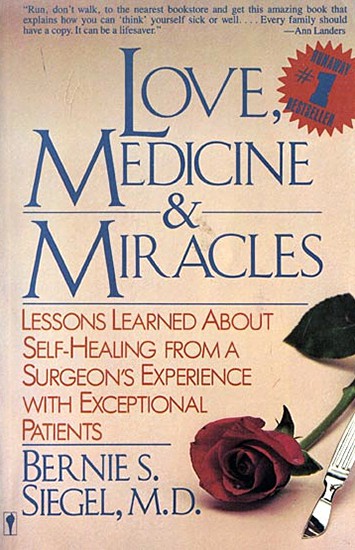 Siegel, a New Haven surgeon, believes that the power of healing stems from the human mind and will, that his scalpel only buys time against cancer, and that self love and determination are more important than choice of therapy. His philosophy has caused radical changes in his practice. Siegel recounts many arresting anecdotes: joyous stories of patients who survived against all odds, sad chronicles of those who seemingly gave up and assented to their own deaths. The author's credentials make this one of the more plausible books on the mind-body connection.
Siegel, a New Haven surgeon, believes that the power of healing stems from the human mind and will, that his scalpel only buys time against cancer, and that self love and determination are more important than choice of therapy. His philosophy has caused radical changes in his practice. Siegel recounts many arresting anecdotes: joyous stories of patients who survived against all odds, sad chronicles of those who seemingly gave up and assented to their own deaths. The author's credentials make this one of the more plausible books on the mind-body connection. -
 This concise collection of Swami Rama's teachings serves as a practical guide for the spiritual seeker. Spiritual practice leads the seeker towards inner experiences of divinity that further one towards attaining the goal of life. Swami Rama, yogi, scientist, philosopher and humanitarian, was deeply steeped in the spiritual traditions of the Himalayan sages. He was a free thinker, guided by direct experience and inner wisdom. His teachings are universal and nonsectarian, providing a bridge between the East and the West.
This concise collection of Swami Rama's teachings serves as a practical guide for the spiritual seeker. Spiritual practice leads the seeker towards inner experiences of divinity that further one towards attaining the goal of life. Swami Rama, yogi, scientist, philosopher and humanitarian, was deeply steeped in the spiritual traditions of the Himalayan sages. He was a free thinker, guided by direct experience and inner wisdom. His teachings are universal and nonsectarian, providing a bridge between the East and the West. -
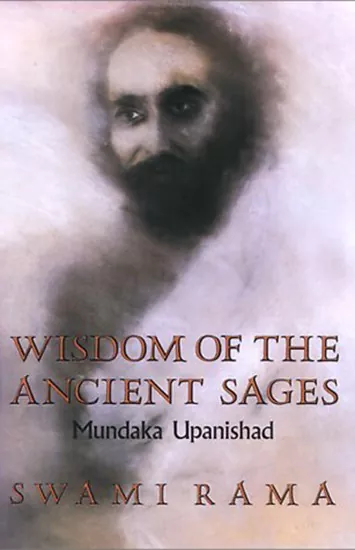 In Wisdom of the Ancient Sages, Swami Rama shares with the modern world the powerful and inspiring teachings of one of the worlds greatest spiritual texts: the Mundaka Upanishad. This beautiful translation and commentary affirms human nature as peaceful, creative, and transcendent. Its message will assist anyone who seeks to walk the path of personal andspiritual development.
In Wisdom of the Ancient Sages, Swami Rama shares with the modern world the powerful and inspiring teachings of one of the worlds greatest spiritual texts: the Mundaka Upanishad. This beautiful translation and commentary affirms human nature as peaceful, creative, and transcendent. Its message will assist anyone who seeks to walk the path of personal andspiritual development. -
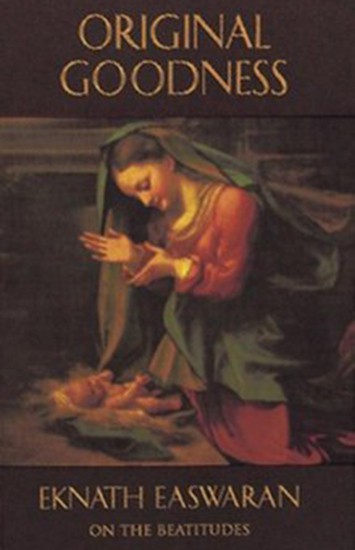 Using exhilarating quotes from numerous Christian mystics, Easwaran focuses on the idea of "original goodness," the spark of divinity that is every individual's birthright, regardless of personal assets or liabilities. The spiritual resources everyone needs love, compassion, meaning, hope, freedom from fear are already there, ready to be uncovered. Original Goodness includes instructions on how to meditate, and how to apply the power and insights of meditation to everyday life. Original Goodness is part of a three-volume series, Classics of Christian Inspiration, which collects the best writing of Eknath Easwaran on well-loved and inspiring passages and mystics in the Christian tradition.
Using exhilarating quotes from numerous Christian mystics, Easwaran focuses on the idea of "original goodness," the spark of divinity that is every individual's birthright, regardless of personal assets or liabilities. The spiritual resources everyone needs love, compassion, meaning, hope, freedom from fear are already there, ready to be uncovered. Original Goodness includes instructions on how to meditate, and how to apply the power and insights of meditation to everyday life. Original Goodness is part of a three-volume series, Classics of Christian Inspiration, which collects the best writing of Eknath Easwaran on well-loved and inspiring passages and mystics in the Christian tradition. -
 As we learn to rejoice in “Lord God, thou holy lover of my soul,” we begin to glimpse the transformative power of divine love in our lives. In this anecdotal, warm, and intensely practical commentary on Thomas a Kempis’s Imitation of Christ, Easwaran examines this enduring Christian passage line by line to show us what love is and how to overcome obstacles to loving more fully.
As we learn to rejoice in “Lord God, thou holy lover of my soul,” we begin to glimpse the transformative power of divine love in our lives. In this anecdotal, warm, and intensely practical commentary on Thomas a Kempis’s Imitation of Christ, Easwaran examines this enduring Christian passage line by line to show us what love is and how to overcome obstacles to loving more fully. -
Out of stock
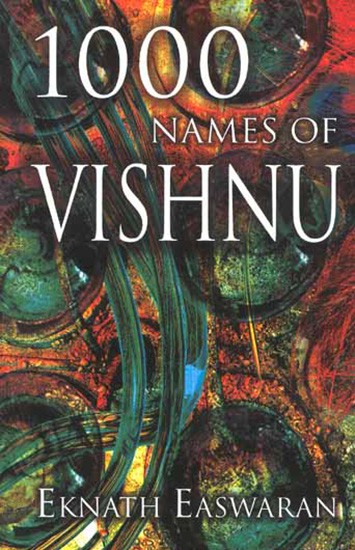 In each piece, Eknath Easwaran selects one of India's traditional thousand names of God and shows its universal significance: that these are not only names of God, but also aspects of the spark of divinity within us.
In each piece, Eknath Easwaran selects one of India's traditional thousand names of God and shows its universal significance: that these are not only names of God, but also aspects of the spark of divinity within us. -
 Among the oldest of India's spiritual texts, the Upanishads are records of intensive question-and-answer sessions given by illumined sages to their students. Widely featured in philosophy courses, the Upanishads have puzzled and inspired wisdom seekers from Yeats to Schopenhauer. Eknath Easwaran makes this challenging text more accessible by selecting the passages most relevant to readers seeking timeless truths today. His best-selling, accessible, highly readable translation and lively foreword place the teachings in a contemporary context for students and general readers alike.
Among the oldest of India's spiritual texts, the Upanishads are records of intensive question-and-answer sessions given by illumined sages to their students. Widely featured in philosophy courses, the Upanishads have puzzled and inspired wisdom seekers from Yeats to Schopenhauer. Eknath Easwaran makes this challenging text more accessible by selecting the passages most relevant to readers seeking timeless truths today. His best-selling, accessible, highly readable translation and lively foreword place the teachings in a contemporary context for students and general readers alike. -
 For the first time the science of mantra is made understandable for the modern Western reader. The most common misconceptions regarding meditation and the use of mantra are explained clearly and often humorously. This comprehensive book covers the science of mantra from all angles, including linguistics, history, psychology, science, philosophy, and religion
For the first time the science of mantra is made understandable for the modern Western reader. The most common misconceptions regarding meditation and the use of mantra are explained clearly and often humorously. This comprehensive book covers the science of mantra from all angles, including linguistics, history, psychology, science, philosophy, and religion -
Out of stock
 This scholarly, insightful work integrates history and philosophical wisdom to span the gap between life and death. The inspiring examples cited from various cultural traditions draw us away from preoccupation with our own mortality and toward a deeper enjoyment of the life process itself. For those who are touched by the realism of death, this books bids us to look for the purpose in its lesson.
This scholarly, insightful work integrates history and philosophical wisdom to span the gap between life and death. The inspiring examples cited from various cultural traditions draw us away from preoccupation with our own mortality and toward a deeper enjoyment of the life process itself. For those who are touched by the realism of death, this books bids us to look for the purpose in its lesson. -
Out of stock
 A newly revised an expanded version of a popular an unique work, this extraordinarily valuable introduction discussion of the philosophy of hath yoga is indispensable to any student of yoga. This clear and easy to follow exposition views hatha within the framework of raja yoga, the yoga of eight complements, as promulgated by Pantanjali, the author of Yoga Sutras, the most authoritative text on the science of yoga. Hatha should not be merely a system of physical exercise: this work emphasizes the paramount role that the mind plays in hatha yoga, and demonstrates how to elevate the practices of hatha to an inner spiritual experience. This study outlines how the practice of hatha yoga can serve as a means to understand the subtler essences of mind and prana and to prepare for meditation and the awakening of the kundalini force.
A newly revised an expanded version of a popular an unique work, this extraordinarily valuable introduction discussion of the philosophy of hath yoga is indispensable to any student of yoga. This clear and easy to follow exposition views hatha within the framework of raja yoga, the yoga of eight complements, as promulgated by Pantanjali, the author of Yoga Sutras, the most authoritative text on the science of yoga. Hatha should not be merely a system of physical exercise: this work emphasizes the paramount role that the mind plays in hatha yoga, and demonstrates how to elevate the practices of hatha to an inner spiritual experience. This study outlines how the practice of hatha yoga can serve as a means to understand the subtler essences of mind and prana and to prepare for meditation and the awakening of the kundalini force. -
Out of stock
 The present volume provides a learned commentary on the second chapter of the Yoga-Sutra. From a traditional perspective, it is as original, broad, bold, and awe inspiring a commentary as Vijnanabhikshu's 16th century Yoga-Varttika. The second chapter of the Yoga-sutra contains the core of Patanjali's philosophical and metapsychological framework, and it also defines both the components of kriya-yoga and the first five components of the eight limbed Ashtanga-Yoga.
The present volume provides a learned commentary on the second chapter of the Yoga-Sutra. From a traditional perspective, it is as original, broad, bold, and awe inspiring a commentary as Vijnanabhikshu's 16th century Yoga-Varttika. The second chapter of the Yoga-sutra contains the core of Patanjali's philosophical and metapsychological framework, and it also defines both the components of kriya-yoga and the first five components of the eight limbed Ashtanga-Yoga. -
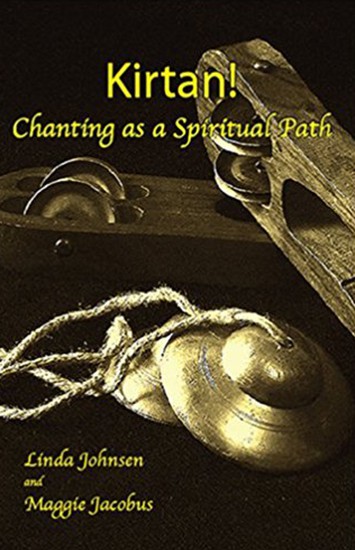 Kirtan has recently arrived in the West, carried by brilliant singers and musicians, creating a new musical movement that turned yogic chanting into a cultural phenomenon. This book interviews eight of America s top Kirtan singers, Krishna Das, Deva Premal, Bhagavan Das, Snatam Kaur, Ragani, Jai Uttal, Dave Stringer, Wah.
Kirtan has recently arrived in the West, carried by brilliant singers and musicians, creating a new musical movement that turned yogic chanting into a cultural phenomenon. This book interviews eight of America s top Kirtan singers, Krishna Das, Deva Premal, Bhagavan Das, Snatam Kaur, Ragani, Jai Uttal, Dave Stringer, Wah. -
Out of stock
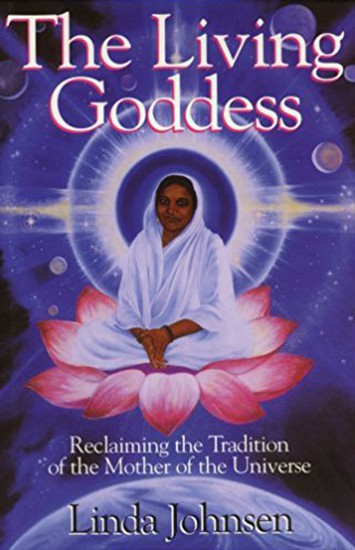 This very readable, yet scholarly book, takes us to the temples, jungles, and cities of India to reveal a continuous stream of Goddess spiritualitythat is unbroken for most of human history. "The Living Goddess" also offers a vision of what our own Goddess heritage in the West must have been, revealing how much we lost when humans turned away from the Divine Female.
This very readable, yet scholarly book, takes us to the temples, jungles, and cities of India to reveal a continuous stream of Goddess spiritualitythat is unbroken for most of human history. "The Living Goddess" also offers a vision of what our own Goddess heritage in the West must have been, revealing how much we lost when humans turned away from the Divine Female. -
Out of stock
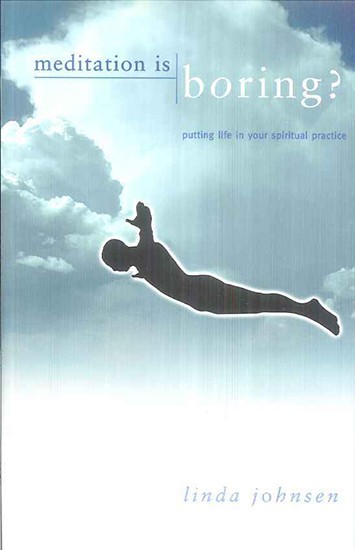 Johnsen offers guidance on meditation revealing the intense mental absorption required. Shows the reader the enlightenment to be found through meditation.
Johnsen offers guidance on meditation revealing the intense mental absorption required. Shows the reader the enlightenment to be found through meditation. -
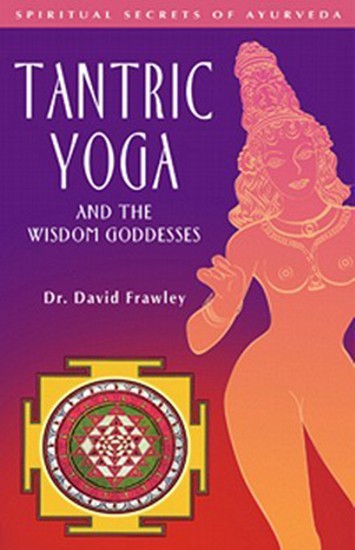 Tantric Yoga and the Wisdom Goddesses is an excellent introduction to the essence of Hindu Tantrism. The author discusses all the major concepts and offers valuable corrections for many existing misconceptions. He also introduces the reader to the core Tantric practices of meditation and mantra recitation, focusing on the ten Wisdom Goddesses" states Georg Feuerstein.
Tantric Yoga and the Wisdom Goddesses is an excellent introduction to the essence of Hindu Tantrism. The author discusses all the major concepts and offers valuable corrections for many existing misconceptions. He also introduces the reader to the core Tantric practices of meditation and mantra recitation, focusing on the ten Wisdom Goddesses" states Georg Feuerstein. -
 The Rig Veda is not only one of the oldest sacred scriptures of the world, but also one of the most misunderstood. Past scholarship has dismissed the hymns of the Rig Veda as being expressions of a primitive animistic mentality that only rarely rose to true spiritual and philosophical heights. David Frawley's book demonstrates that this judgmental view is ill-founded. His fine renderings of select Vedic hymns bear witness to the fact that their composers were sages and seers--powerful poets who knew the art of symbolic and metaphoric communication. The Vedic hymns give us a unique glimpse not into a primitive mentality but a mentality and culture that revolved around the highest spirtual values and visions. This is an important and riveting book, ushering in a new and sounder tradition of Vedic interpretation and scholarship.
The Rig Veda is not only one of the oldest sacred scriptures of the world, but also one of the most misunderstood. Past scholarship has dismissed the hymns of the Rig Veda as being expressions of a primitive animistic mentality that only rarely rose to true spiritual and philosophical heights. David Frawley's book demonstrates that this judgmental view is ill-founded. His fine renderings of select Vedic hymns bear witness to the fact that their composers were sages and seers--powerful poets who knew the art of symbolic and metaphoric communication. The Vedic hymns give us a unique glimpse not into a primitive mentality but a mentality and culture that revolved around the highest spirtual values and visions. This is an important and riveting book, ushering in a new and sounder tradition of Vedic interpretation and scholarship. -
 In classic of patient empowerment, Peace, Love & Healing offered the revolutionary message that we have an innate ability to heal ourselves. Now proven by numerous scientific studies, the connection between our minds and our bodies has been increasingly accepted as fact throughout the mainstream medical community. In a new introduction, Dr. Bernie Siegel highlights current research on the relationships among consciousness, psychosocial factors, attitude and immune function.
In classic of patient empowerment, Peace, Love & Healing offered the revolutionary message that we have an innate ability to heal ourselves. Now proven by numerous scientific studies, the connection between our minds and our bodies has been increasingly accepted as fact throughout the mainstream medical community. In a new introduction, Dr. Bernie Siegel highlights current research on the relationships among consciousness, psychosocial factors, attitude and immune function. -
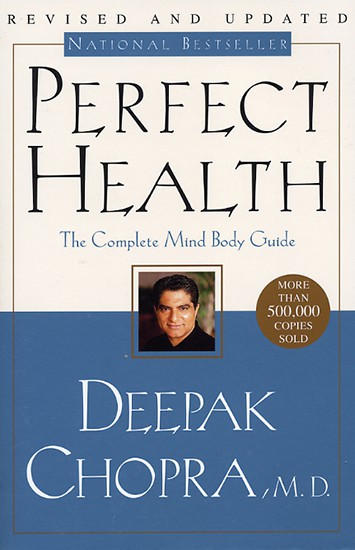 A decade ago, Deepak Chopra, M.D., wrote Perfect Health, the first practical guide to harnessing the healing power of the mind, which became a national bestseller. The book described how breakthroughs in physics and medicine were underscoring the validity of a 5,000-year-old medical system from ancient India known as Ayurveda ("the knowledge of life span" in Sanskrit). Perfect Health went on to describe how to apply the ancient wisdom of Ayurveda to everyday life. In celebration of this classic work we have created this new edition, revised and updated to include the latest medical research. Although we experience our bodies as solid, they are in fact more like fires that are constantly being consumed and renewed. We grow new stomach linings every five days, for instance. Our skin is new every five weeks. Each year, fully 98 percent of the total number of atoms in our bodies is replaced. Ayurveda gives us the tools to intervene at this quantum level, where we are being created anew each day. Ayurveda tells us that freedom from sickness depends on contacting our own awareness, bringing it into balance, and then extending that balance to the body. Perfect Health provides a complete step-by-step program of mind body medicine tailored to individual needs. A quiz identifies the reader's mind body type: thin, restless Vata; enterprising, efficient Pitta; tranquil, steady Kapha; or any combination of these three. This body type becomes the basis for a specific Ayurvedic program of diet, stress reduction, neuromuscular integration, exercise, and daily routines. The result is a total plan, tailor-made for each individual, to reestablish the body's essential balance with nature; to strengthen the mind body connection; and to use the power of quantum healing to transcend the ordinary limitations of disease and aging--in short, for achieving Perfect Health.
A decade ago, Deepak Chopra, M.D., wrote Perfect Health, the first practical guide to harnessing the healing power of the mind, which became a national bestseller. The book described how breakthroughs in physics and medicine were underscoring the validity of a 5,000-year-old medical system from ancient India known as Ayurveda ("the knowledge of life span" in Sanskrit). Perfect Health went on to describe how to apply the ancient wisdom of Ayurveda to everyday life. In celebration of this classic work we have created this new edition, revised and updated to include the latest medical research. Although we experience our bodies as solid, they are in fact more like fires that are constantly being consumed and renewed. We grow new stomach linings every five days, for instance. Our skin is new every five weeks. Each year, fully 98 percent of the total number of atoms in our bodies is replaced. Ayurveda gives us the tools to intervene at this quantum level, where we are being created anew each day. Ayurveda tells us that freedom from sickness depends on contacting our own awareness, bringing it into balance, and then extending that balance to the body. Perfect Health provides a complete step-by-step program of mind body medicine tailored to individual needs. A quiz identifies the reader's mind body type: thin, restless Vata; enterprising, efficient Pitta; tranquil, steady Kapha; or any combination of these three. This body type becomes the basis for a specific Ayurvedic program of diet, stress reduction, neuromuscular integration, exercise, and daily routines. The result is a total plan, tailor-made for each individual, to reestablish the body's essential balance with nature; to strengthen the mind body connection; and to use the power of quantum healing to transcend the ordinary limitations of disease and aging--in short, for achieving Perfect Health. -
Out of stock
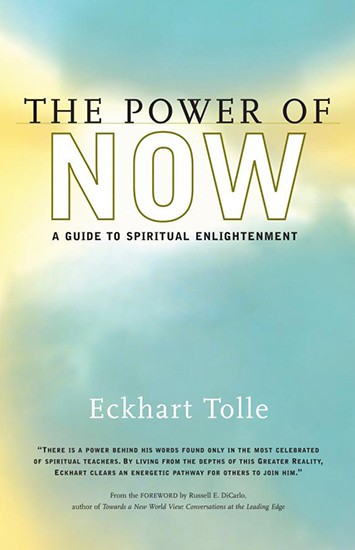 It's no wonder that The Power of Now has sold over 2 million copies worldwide and has been translated into over 30 foreign languages. Much more than simple principles and platitudes, the book takes readers on an inspiring spiritual journey to find their true and deepest self and reach the ultimate in personal growth and spirituality: the discovery of truth and light. In the first chapter, Tolle introduces readers to enlightenment and its natural enemy, the mind. He awakens readers to their role as a creator of pain and shows them how to have a pain-free identity by living fully in the present. The journey is thrilling, and along the way, the author shows how to connect to the indestructible essence of our Being, "the eternal, ever-present One Life beyond the myriad forms of life that are subject to birth and death." Featuring a new preface by the author, this paperback shows that only after regaining awareness of Being, liberated from Mind and intensely in the Now, is there Enlightenment.
It's no wonder that The Power of Now has sold over 2 million copies worldwide and has been translated into over 30 foreign languages. Much more than simple principles and platitudes, the book takes readers on an inspiring spiritual journey to find their true and deepest self and reach the ultimate in personal growth and spirituality: the discovery of truth and light. In the first chapter, Tolle introduces readers to enlightenment and its natural enemy, the mind. He awakens readers to their role as a creator of pain and shows them how to have a pain-free identity by living fully in the present. The journey is thrilling, and along the way, the author shows how to connect to the indestructible essence of our Being, "the eternal, ever-present One Life beyond the myriad forms of life that are subject to birth and death." Featuring a new preface by the author, this paperback shows that only after regaining awareness of Being, liberated from Mind and intensely in the Now, is there Enlightenment. -
Out of stock
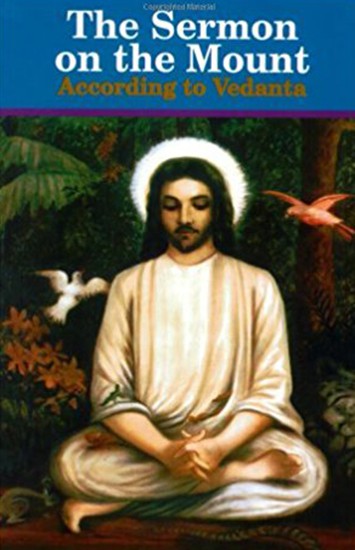 The Sermon on the Mount represents the essence of both Christ's teachings and the teachings of Vedanta. Christ said, Blessed are the pure in heart, for they shall see God. The kingdom of God is within. Be ye perfect.... Theologians are apt to explain away these teachings, but we believe Christ meant exactly what he said. Read in this book how Vedanta goes to the heart of Christ's teachings.
The Sermon on the Mount represents the essence of both Christ's teachings and the teachings of Vedanta. Christ said, Blessed are the pure in heart, for they shall see God. The kingdom of God is within. Be ye perfect.... Theologians are apt to explain away these teachings, but we believe Christ meant exactly what he said. Read in this book how Vedanta goes to the heart of Christ's teachings. -
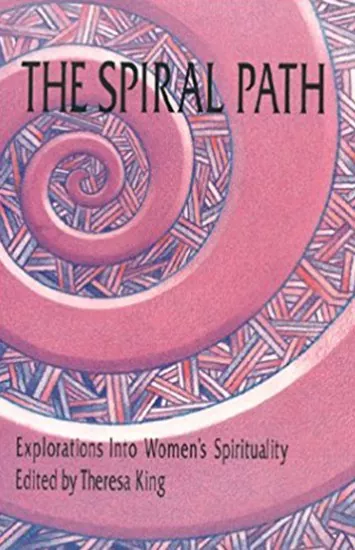 This splendid, updated version of an earlier collection offers 22 essays, written mostly by women and by a few men from diverse religious traditions and professional specialities, that explore connections between spirituality and a wide variety of other topics: self-image, health, nature, psychology, freedom, sex, relationships, marriage, motherhood, food, creativity, art, scriptures, prophecy, prayer, renunciation, and suffering. The essays, updated by the authors and including eight that are brand new, are exploratory, thought-provoking, and inspiring.
This splendid, updated version of an earlier collection offers 22 essays, written mostly by women and by a few men from diverse religious traditions and professional specialities, that explore connections between spirituality and a wide variety of other topics: self-image, health, nature, psychology, freedom, sex, relationships, marriage, motherhood, food, creativity, art, scriptures, prophecy, prayer, renunciation, and suffering. The essays, updated by the authors and including eight that are brand new, are exploratory, thought-provoking, and inspiring. -
Out of stock
 "Stress is not a necessary part of life", says Dr. Phil Nuernberger. Stress arises when we let fear and self-doubt control our thoughts and actions. He then shows us how to take charge of the powers of our mind, addresses the roots of our fears, and offers real, workable solutions to the epidemic of stress in the world today.
"Stress is not a necessary part of life", says Dr. Phil Nuernberger. Stress arises when we let fear and self-doubt control our thoughts and actions. He then shows us how to take charge of the powers of our mind, addresses the roots of our fears, and offers real, workable solutions to the epidemic of stress in the world today. -
 In The Warrior Sage, Dr. Phil Nuernberger carefully examines the conventional theories, revered dogmas, and cultural formats regarding the human potential that are held in high regard by scientists, religionists, the business realm, and the public. Leaving no major paradigm unexamined, he illustrates the inadequacy of our cultural biases that have held society in its throes and provoked the social conditions that face us today. Then he offers a new idea.
In The Warrior Sage, Dr. Phil Nuernberger carefully examines the conventional theories, revered dogmas, and cultural formats regarding the human potential that are held in high regard by scientists, religionists, the business realm, and the public. Leaving no major paradigm unexamined, he illustrates the inadequacy of our cultural biases that have held society in its throes and provoked the social conditions that face us today. Then he offers a new idea. -
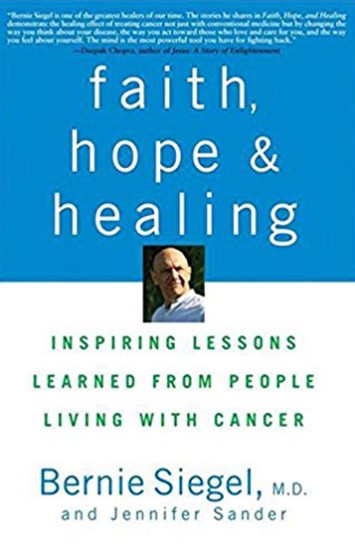 In this collection of first-person accounts, doctor and author Siegel (Love, Medicine, and Miracles) brings together almost three dozen cancer patients (or close relations of) to share their stories and the lessons they've learned. Many entries tackle the moment of diagnosis (the first, from survivor Angela Passidomo Trafford, opens with the line, "How many times do I have to have cancer?!"), while others pick up at the moment the diagnosis first hits home; still others focus on the end, like Ann Martin Bowler, whose sick brother passed days after a reinvigorating near-death experience. Lynn Zeller contributes a list of the "eight practices" she discovered through cancer that have led to a "wonderfully expanded experience of life" (including a focus on gratitude, mindfulness, and the idea that the universe "is in a conspiracy for my good"); Edwina Ford focuses on her afflicted husband's admiration, and efforts on behalf, of Lance Armstrong's post-surgery Tour de France comeback. For each piece, Siegel provides a reflection and a moral ("Life's difficulties are what teach us to grow") that clarify and encourage. Anyone struggling with cancer will find many relatable voices and, in Siegel, a compassionate expert commentator.
In this collection of first-person accounts, doctor and author Siegel (Love, Medicine, and Miracles) brings together almost three dozen cancer patients (or close relations of) to share their stories and the lessons they've learned. Many entries tackle the moment of diagnosis (the first, from survivor Angela Passidomo Trafford, opens with the line, "How many times do I have to have cancer?!"), while others pick up at the moment the diagnosis first hits home; still others focus on the end, like Ann Martin Bowler, whose sick brother passed days after a reinvigorating near-death experience. Lynn Zeller contributes a list of the "eight practices" she discovered through cancer that have led to a "wonderfully expanded experience of life" (including a focus on gratitude, mindfulness, and the idea that the universe "is in a conspiracy for my good"); Edwina Ford focuses on her afflicted husband's admiration, and efforts on behalf, of Lance Armstrong's post-surgery Tour de France comeback. For each piece, Siegel provides a reflection and a moral ("Life's difficulties are what teach us to grow") that clarify and encourage. Anyone struggling with cancer will find many relatable voices and, in Siegel, a compassionate expert commentator. -
Out of stock
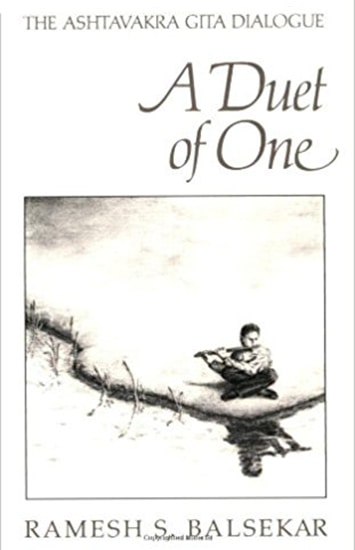 A Duet of One is a translation and interpretation of the most touchingly beautiful of all the Advaitic texts. It provides us with an illuminating and in-depth look at the nature of duality and dualism. In this book Ramesh reveals himself as a spiritual Master for the modern age. His insightful commentary unlocks the beauty and the mystery in this ancient text. He points us to the Understanding that is the true nature of us all.
A Duet of One is a translation and interpretation of the most touchingly beautiful of all the Advaitic texts. It provides us with an illuminating and in-depth look at the nature of duality and dualism. In this book Ramesh reveals himself as a spiritual Master for the modern age. His insightful commentary unlocks the beauty and the mystery in this ancient text. He points us to the Understanding that is the true nature of us all. -
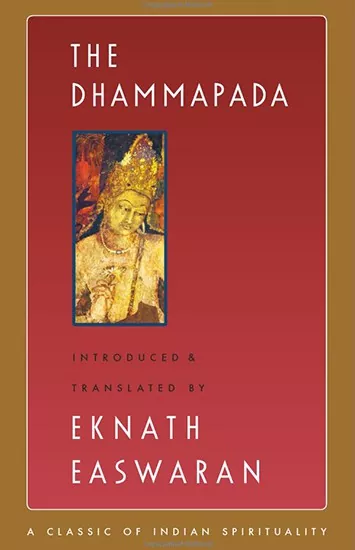 An English-language book originally published in 1986. It contains Easwaran's translation of the Dhammapada, a Buddhist scripture traditionally ascribed to the Buddha himself. The book also contains a substantial overall introduction of about 70 pages,[2] as well as introductory notes to each of the Dhammapada's 26 chapters.
An English-language book originally published in 1986. It contains Easwaran's translation of the Dhammapada, a Buddhist scripture traditionally ascribed to the Buddha himself. The book also contains a substantial overall introduction of about 70 pages,[2] as well as introductory notes to each of the Dhammapada's 26 chapters. -
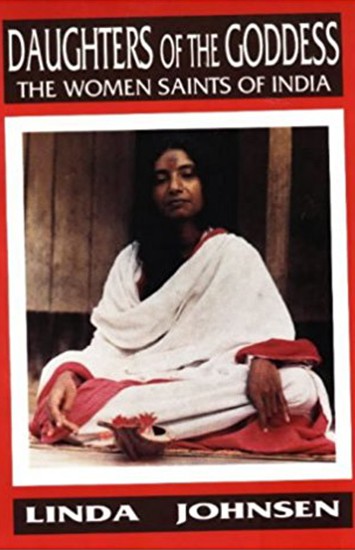 This book takes us along on a search for the feminine face of God. We travel with Linda Johnsen for a fascinating investigation of the great women saints of India who manifest the divine in their lives. Together with her we comb the scriptures, meet the holy ones, and are led, step by step, to sit in awe at the feet of six remarkable, contemporary women.
This book takes us along on a search for the feminine face of God. We travel with Linda Johnsen for a fascinating investigation of the great women saints of India who manifest the divine in their lives. Together with her we comb the scriptures, meet the holy ones, and are led, step by step, to sit in awe at the feet of six remarkable, contemporary women. -
 This is a practical book for people living in the world. The word "practical" implies that the teaching can be practiced in the world, in the midst of family, career and social obligations. No prior preparation is required for reading this book, and after reading this book, no further teaching is required. If one were to sincerely practice the teachings presented by Sri Swami Rama in this book, one will surely achieve the goal of self realization, a state described by Swamiji as the summum bonum of life, a state of bliss, a state of perfection.
This is a practical book for people living in the world. The word "practical" implies that the teaching can be practiced in the world, in the midst of family, career and social obligations. No prior preparation is required for reading this book, and after reading this book, no further teaching is required. If one were to sincerely practice the teachings presented by Sri Swami Rama in this book, one will surely achieve the goal of self realization, a state described by Swamiji as the summum bonum of life, a state of bliss, a state of perfection. -
 This second volume of Swami Nijananda's Commentary on Trustful Surrender to Divine Providence, is a reflection on the writings of Blessed Claude de la Colombiere, S.J.. This volume continues the discussion of the belief that "nothing happens to us in life unless God wills it so." Swami Nijananda leads an illustrious discussion of a process that turns stumbling blocks into stepping stones.
This second volume of Swami Nijananda's Commentary on Trustful Surrender to Divine Providence, is a reflection on the writings of Blessed Claude de la Colombiere, S.J.. This volume continues the discussion of the belief that "nothing happens to us in life unless God wills it so." Swami Nijananda leads an illustrious discussion of a process that turns stumbling blocks into stepping stones. -
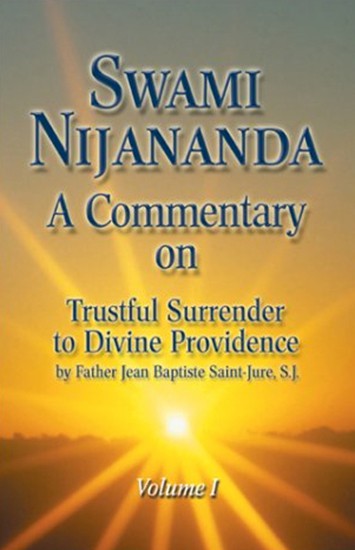 Swami Nijananda's Commentary on Trustful Surrender to Divine Providence Volume I, by Father Jean Baptiste Saint-Jure, is the first volume of lectures to be published. Many of his students felt these lectures were of value to them long after the lecture series ended. This volume explains and illuminates the essential message of Christianity. "In every circumstance, without exception," says Swami Nijananda, surrender to the Lord is the crucial thing...It is your task to harmonize yourself with what the Lord has ordained and not the other way around." This book provides the guidance to orient oneself spiritually in any situation the world presents, however tragic.
Swami Nijananda's Commentary on Trustful Surrender to Divine Providence Volume I, by Father Jean Baptiste Saint-Jure, is the first volume of lectures to be published. Many of his students felt these lectures were of value to them long after the lecture series ended. This volume explains and illuminates the essential message of Christianity. "In every circumstance, without exception," says Swami Nijananda, surrender to the Lord is the crucial thing...It is your task to harmonize yourself with what the Lord has ordained and not the other way around." This book provides the guidance to orient oneself spiritually in any situation the world presents, however tragic. -
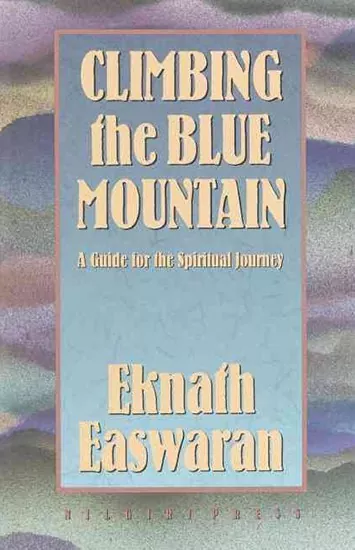 Sixteen lively essays illuminate different aspects of the spiritual journey. The introduction presents the author as a “travel agent” on a journey to the spiritual world within us. The essays are metaphorical travel brochures, invitations to take the plunge into self-discovery through the adventure of meditation. Edited from his extemporaneous talks, this inspiring collection of essays gives the flavor of hearing this great spiritual teacher and storyteller in person. Easwaran successfully combines his Eastern and Western wisdom, which includes a thorough knowledge of English literature, into an eight-point program usable by followers of all religious traditions.
Sixteen lively essays illuminate different aspects of the spiritual journey. The introduction presents the author as a “travel agent” on a journey to the spiritual world within us. The essays are metaphorical travel brochures, invitations to take the plunge into self-discovery through the adventure of meditation. Edited from his extemporaneous talks, this inspiring collection of essays gives the flavor of hearing this great spiritual teacher and storyteller in person. Easwaran successfully combines his Eastern and Western wisdom, which includes a thorough knowledge of English literature, into an eight-point program usable by followers of all religious traditions. -
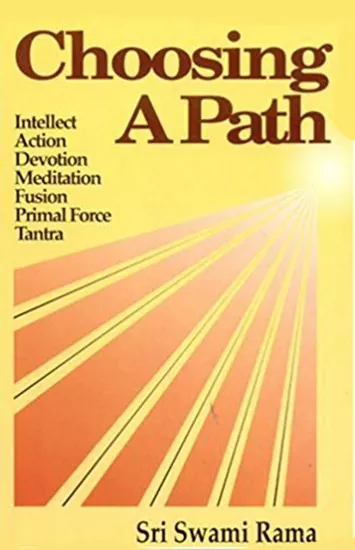 This book gives a glimpse and creates a provocative atmosphere for the intelligent and learned so that they will begin studying their inclination to follow a particular path, and so that they don't waste time and energy in the prevailing confusion of our times, but choose a definite path for themselves. The younger generation today is longing to seek something new and fresh, but it is torn by the conflicts created by guilt and fear. With these views in mind and to serve the needs of the aspirants and free-thinkers, I present this book.
This book gives a glimpse and creates a provocative atmosphere for the intelligent and learned so that they will begin studying their inclination to follow a particular path, and so that they don't waste time and energy in the prevailing confusion of our times, but choose a definite path for themselves. The younger generation today is longing to seek something new and fresh, but it is torn by the conflicts created by guilt and fear. With these views in mind and to serve the needs of the aspirants and free-thinkers, I present this book. -
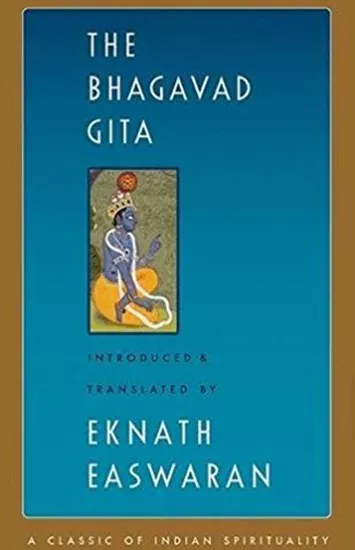 Vivid literature, lofty philosophy -- the Bhagavad Gita distills the finest in India's vast and varied culture On the morning of battle, facing Armageddon, prince Arjuna loses his nerve and refuses to fight. Krishna knows better: "Your very nature will drive you to fight. Your only choice is what to fight against." His advice gives an inspiring model of the man or woman of action -- the person who aims at goodness in a world of conflict and change. In this translation, the Gita stands out as a book of choices -- direct, practical, universal. The introduction sketches the background of the poem and gives clear, contemporary explanations of the basic ideas of Indian philosophy: karma, reincarnation, yoga, freedom. Separate chapter introductions outline the drama as it unfolds.In the Bhagavad Gita, Prince Arjuna asks direct, uncompromising questions of his spiritual guide on the eve of a great battle.In this best-selling and expanded edition of the most famous --and popular -- of Indian scriptures, Eknath Easwaran contextualizes the book culturally and historically and explains the key concepts of Hindu religious thought and the technical vocabulary of yoga. Chapter introductions, notes, and a glossary help readers understand the book's message. Most importantly, this translation uses simple, clear language to impart the poetry, universality, and timelessness of the Gita's teachings.
Vivid literature, lofty philosophy -- the Bhagavad Gita distills the finest in India's vast and varied culture On the morning of battle, facing Armageddon, prince Arjuna loses his nerve and refuses to fight. Krishna knows better: "Your very nature will drive you to fight. Your only choice is what to fight against." His advice gives an inspiring model of the man or woman of action -- the person who aims at goodness in a world of conflict and change. In this translation, the Gita stands out as a book of choices -- direct, practical, universal. The introduction sketches the background of the poem and gives clear, contemporary explanations of the basic ideas of Indian philosophy: karma, reincarnation, yoga, freedom. Separate chapter introductions outline the drama as it unfolds.In the Bhagavad Gita, Prince Arjuna asks direct, uncompromising questions of his spiritual guide on the eve of a great battle.In this best-selling and expanded edition of the most famous --and popular -- of Indian scriptures, Eknath Easwaran contextualizes the book culturally and historically and explains the key concepts of Hindu religious thought and the technical vocabulary of yoga. Chapter introductions, notes, and a glossary help readers understand the book's message. Most importantly, this translation uses simple, clear language to impart the poetry, universality, and timelessness of the Gita's teachings. -
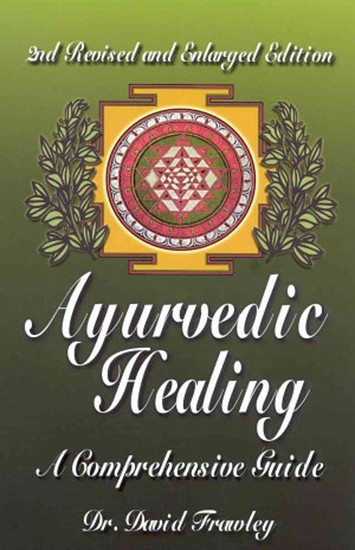 Ayurvedic Healing presents the Ayurvedic treatment of common diseases, covering over eighty different ailments from the common cold to cancer. It provides a full range of treatment methods including diet, herbs, oils, gems, mantra and meditation. The book also shows the appropriate life-style practices and daily health considerations for your unique mind-body type both as an aid to disease treatment and for disease prevention. This extraordinary book is a complete manual of Ayurvedic health care that offers the wisdom of this ancient system of mind-body medicine to the modern reader relative to our special health concerns today. The present edition is a revised and expanded version of the original 1989 edition, covering additional diseases and adding new treatments.
Ayurvedic Healing presents the Ayurvedic treatment of common diseases, covering over eighty different ailments from the common cold to cancer. It provides a full range of treatment methods including diet, herbs, oils, gems, mantra and meditation. The book also shows the appropriate life-style practices and daily health considerations for your unique mind-body type both as an aid to disease treatment and for disease prevention. This extraordinary book is a complete manual of Ayurvedic health care that offers the wisdom of this ancient system of mind-body medicine to the modern reader relative to our special health concerns today. The present edition is a revised and expanded version of the original 1989 edition, covering additional diseases and adding new treatments.


